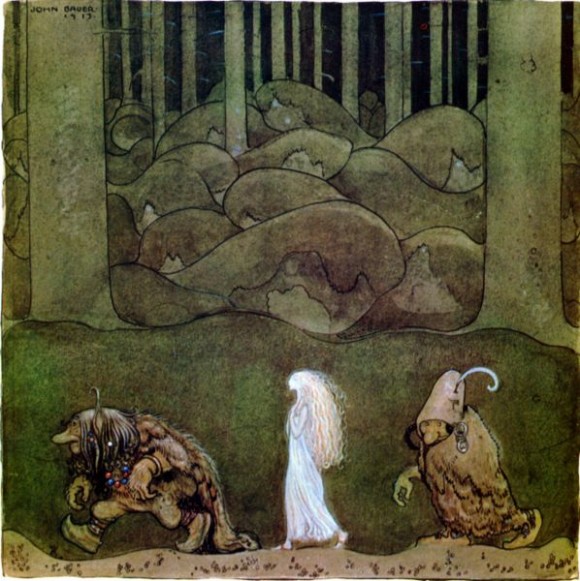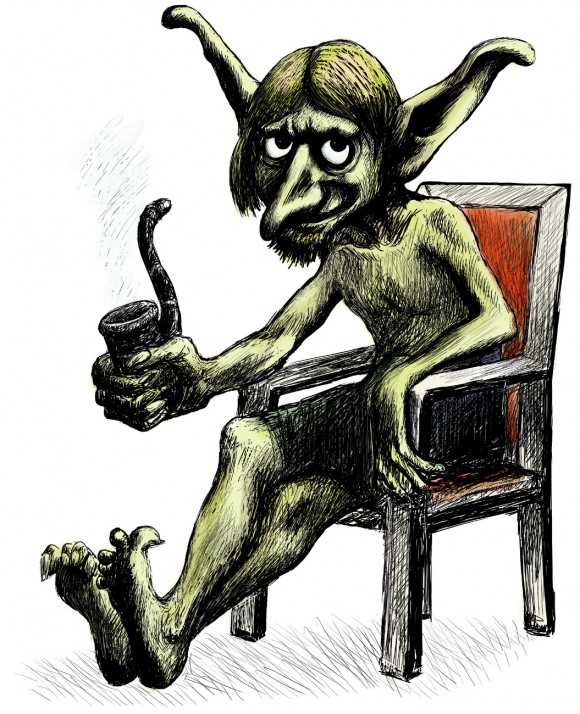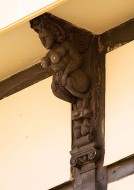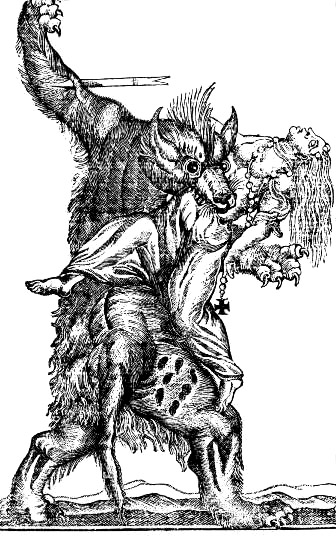
Halloween is almost here, and that means it’s time to indulge in some corn sugar gluttony to protect ourselves from the thin veil between the living and dead. That’s my strategy anyways.
This time of year, traditionally known as Last Harvest in Europe, and more specifically as the cross-quarter between the Solstice and the Winter Equinox, has a long association with ghosts, goblins and spirits. I’ve explored the Celtic roots of Halloween before, as traditional European culture still plays a heavy hand in how we perceive and celebrate this time of year, even though we often don’t have any idea why we’re doing what we’re doing. Indeed, giving way food, putting out gourds in the front yard, and dressing up as ghosts are all left-overs from the ancient rites of staying out of the way of spirits as our worlds collide.
So let’s talk about one dreaming source to some of these traditional tales: sleep paralysis. Now, just because someone has a vision during what we today call sleep paralysis or hypnagogic hallucinations does not mean there’s no validity for their experiences. Biology does not explain away inner truths, it only provides a framework for the material correlates to that truth. So, keep this in mind the next time you have a old hag sitting on your chest.
Some common sleep paralysis entities
Vampires
Vampires are not an invention of Romantic era in Europe. They’re a cross-cultural phenomenon. They often are first seen in doorways or thresholds in sleep paralysis, which may be one experiential root to the myth that you have to invite them in. They have long teeth and they bite your neck and steal your vital energies. Sexual vampires, or succubi, are a sub-class of this kind of entity (see below). Bram Stoker’s Dracula was probably inspired by sleep paralysis, by the way. This passage speaks for itself:
“There was in the room the same thin white mist that I had before discovered . . . I felt the same vague terror which had come to me before and the same sense of some presence . . . Then indeed, my heart sank within me: Beside the bed, as if had stepped out of the mist—or rather as if the mist had turned into his figure, for it had completely disappeared—stood a tall, thin man, all in black. I knew him at once from the description of the others. The waxen face: the high aquiline nose, on which the light fell in a thin white line; the parted red lips, with the sharp white teeth showing between; and the red eyes . . . I would have screamed out, only that I was paralyzed.” 1
Little people

Fairies, goblins, and dark elves are common entities to encounter during sleep paralysis visions. In German, the word nightmare, “albtraum,” literally means “elf dream.” I wrote more about the connection of elves and paralysis here. These entities are typically playful although they can be ghastly to look at. In Germanic traditions, the goblins known as Brownies are blamed for lost objects and other poltergeist activity in homes. Tricksters by nature, they may poke their hands into places where they shouldn’t.
The Dead (and the Undead)

Dead people show up in sleep paralysis all the time. A common vision is to see the individual standing by the side of the bed. They are often mute. If you have repetitive encounters with these silent entities, they can be quite communicative if you ask (in your mind) “How can I help you? What do you want?”
A classic hypnagogic-inspired tale of a ghost visitation can be found in Dicken’s Christmas Carol. In this tale, Marley’s visit takes on many of the classic characteristics of a visitation, such as the feeling of presence in the room, followed by the sound of chains and approaching footsteps, and the narrator’s adamant conclusion that he is awake despite the otherworldly nature of the encounter. In Ireland and Hawaii, ancestors are often heard in SP as they traverse “spirit roads.” In these cultures, it’s recommended to not look the creatures in the eye as they pass.
Here’s another account collected from Japanese researchers in the journal Dreaming:
One night in July 1961, Mr. Ishida, a chief mechanic, had a dream of a sailor while he was sleeping in a dormitory room at Tsuiki Air Force Base, Kitsuki County in the nap room of the Tsuiki Airforce Base, Fukuoka Prefecture, which was a commando-type air force base during World War II. The sailor wore a uniform and said he had been killed by being caught in a spinning airplane propeller. While he was dreaming, Mr. Ishida felt a heavy weight in his breast and couldn’t move an inch, though he struggled to. Mr. Ishida examined the history of this air force base and learned that had been such an accident in the past.2
Succubi

In medieval Europe, accounts suggest that demons could sit on the sufferer’s chest and sexually molest them against their will. These demons were known as the Incubus (male) and the Succubus (female). The Malleus Maleficarum (“the Witch’s Hammer”), a guidebook written in 1486 and used to prosecute pagans and witches during the Inquisition, suggests that witches are those who voluntarily submit themselves (and have intercourse) with the Incubus demons. Some succubi legends suggest female demons collected men’s sperm during forced intercourse at night.
These erotic encounters still happen today, and according to the accounts I’ve collected, they are not necessarily unpleasant. These entities, who can look undead, or half-human, or even like alien greys, may want to have sex with you while you are paralyzed… yet oddly aroused. In such cases, they may succeed. Orgasms are frequently reported, for both the spirit and the “victim,” although I’m not sure how to tell if the spirits are faking.
Demons and Animal Monsters

Some sleep paralysis entities are really terrible creatures. They may have red glowing eyes or long claws. Some take on the shape of animal hybrids, such as BirdMan, SpiderWoman, and WolfBoy. They have bad manners and sit on your chest and drool on your face. Their breath stinks too. Insect hybrids tend to be more taciturn than mammal hybrids.
Here also are the Alien Greys, with their long limbs, waxy skin, and shiny black eyes. Aliens have a preference for power tools and medical technologies. These creatures come with purpose. Center yourself and negotiate, or wake yourself up before they bore into your skull.
Sleep paralysis is the original spooky. With nightmares like this, who needs horror movies?
This article is adapted from my book Sleep Paralysis: A Guide to Hypnagogic Visions and Visitors of the Night – now updated in and expanded 2nd edition.
Sources
1Stoker, B. Dracula. p. 267
2Furuya, H., Ikezoe, K., Shigeto, H., Oyyagi, Y., Arahata, H., Araki, E., and Fujii, N. (2009). Sleep- and non-sleep-related hallucinations—relationship to ghost tales. Dreaming, 19(4), December 2009, pp. 232-238.
First Image: “One summer’s evening…” by John Baeur, 1913. Illustration for “The Changeling” by Helena Nyblom in the anthology Among Pixies and Trolls.
Great article, Ryan!
I will have to get a copy of your book… I’m looking for something to jumpstart my training back into the world of lucid dreaming/OBEs.
Happy Halloween and best of luck with your new book 🙂
Cheers,
Will
In Estonian, the word for nightmare (luupainaja) comes from the words bone (luu) and to haunt or to obsess (painama). So it’s something that haunts you thoroughly to your bones 🙂
And there’s another word for nightmare (õudusunenägu) which comes from words horrific (õudne) and dream (unenägu).
Thank you for your effort in dream research. It sure has inspired me a lot.
but sometimes the little buggers stop you from waking up!
No matter what the ‘medical research’ says to explain this phenomena away… I still prefer thinking that the truth sits closer to entity visitations … dreambody doesn’t play with the same rules of physics as this perception of reality does, and besides, the ‘mystery’ of it is much more fun!! 🙂 As you say Ryan, the veil is thinner in our sleep. Thanks for the article. Great… as always.
Will: reading about lucid dreaming is one of the easiest and fun ways to get that jumpstart.
Taavi: thanks for this info, fascinating.
Liam: you have got to share some of your recent encounters with us!
Moo: I’m with you. in this case, the scientific narrative only offers explanation, whereas the phenomenological narrative offers actionable steps that can shift our reality.
Ok I will start sharing.
Will, Ryan is totally right about lucid dream reading and getting back into it. I’ve been reading material for over a year now and have had lots of LD’s after.
My most recent lucid dream was on Oct 31st after reading Ryan’s excellent Halloween article. It started with a horrible little goblin or trull playing a playing a sick practicle joke on me, pretending to be my baby son (that’s all I’ll say about it!) I then chased the little sh*t around the bedroom saying “I just want to talk to you” – but really want to kick you around like a football (soccer ball?). It then disapeered under the crack bed which confused me for a moment before realising, oh yeah it’s a dream. I was then in and out of waking to lucid dreaming, struggling to maintain clarity of vision on objects. I thought about the things I’d read, rub the hands, focus on objects, stay calm, spin around. I became increasingly lucid, quite rudely ingnoring dream characters and concentrating on how beyond real I could make my awareness….and then spontaneously became a thought form. I was whisked away from the dream scene to a transcendent experience of a gradually increasing, pulsating, warping that came to and abrupt halt before the conclusion to be informed that I still wasn’t ready. Anyway, progress has been made as frustrated as this made me feel.
Nice article,just finished the book”Sleep Paralysis”. Well worth reading ,well researched and presented,must have book for dreamers.
Very interesting article! I can’t wait to read your book!